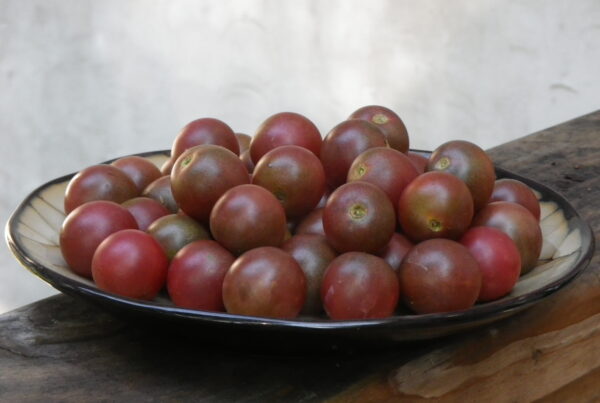On June 28, the Senate passed its version of the 2018 Farm Bill on a broad bipartisan vote of 86 yea and 11 nay. The final Senate Farm Bill includes all the promising conservation, local food, beginning farmer, and organic research provisions outlined in the June issue of the VABF e-newsletter. In addition, the Grassley Amendment to strengthen the “actively engaged in farming” provisions for commodity subsidy payment limits was adopted as part of the Senate’s final bill.
One week earlier (June 21), the House narrowly passed (213 – 211) the same highly flawed version of the 2018 Farm bill that had been defeated 198 – 213 in May. This bill would eliminate the Conservation Stewardship Program (CSP), defund the Value Added Producer Grants (VAPG) and Farmers Market and Local Foods Program (FMLFPP), and widen current loopholes in commodity subsidy payment limits for mega-farms.
In short, the Senate Farm Bill takes important steps toward a more sustainable federal farm policy, while the House’s “Ghost Town and Gully Wash Act of 2018” would throw working lands conservation, rural development, and family farms under the bus.
The next step for the 2018 Farm Bill is “Conference”, in which a select group of Senators and Representatives, chosen primarily but not exclusively from the Agriculture Committees, meets to reconcile the Senate and House versions into a final Farm Bill for passage in both chambers and then Presidential signature.
Today, July 18, the House named its Conferees – 29 Republicans and 18 Democrats; 22 from the Agriculture committee and 25 from other committees. The Senate has yet to select its conferees. Representative Bob Goodlatte (R-6th district of Virginia) is one of the House Conferees, and is thus a priority Representative for us to contact regarding the Farm Bill. Conferees in neighboring states include David Rouzer (R 7th), Virginia Foxx (R), Mark Waller (R 6th) and Alma Adams (D) in North Carolina, and James Comer (R 1st) in Kentucky.
With two such contrasting bills, Conference negotiations will be complex and probably lengthy. Four emerging priorities for sustainable food and agriculture advocates include:
- Save the CSP and strengthen working lands conservation programs.
- Establish permanent baseline funding for:
- Organic Research and Extension Initiative (OREI)
- VAPG and FMLFPP
- Beginning Farmer and Rancher Development Program (BFERDP) and Outreach and Assistance to Socially Disadvantaged Farmers and Ranchers (Section 2501)
- Close commodity payment limitations loopholes (Grassley Amendment)
- Protect the Supplemental Nutrition Assistance Program (SNAP).
We want the provisions of the Senate Farm Bill to prevail on each of the above priorities. While Rep. Goodlatte and other Conferees are top priority, followed by other Agriculture Committee Members, any Member of Congress can reach out to Conferees to provide input, and may be impelled to do so if they hear from enough constituents on Farm Bill issues.
Now is the time to let your Representative and Senators know what you would like to see in the next Farm Bill. If you are in Bob Goodlatte’s district, give his office a call TODAY – we need him to feel the heat of constituents demanding the more sustainable Farm Bill offered by the Senate.
Remember that Virginia’s two Senators – Tim Kaine and Mark Warner – want to see a clean and restored Chesapeake Bay, and a strong CSP will help our farmers protect the Bay while improving production. They also support local food systems, food security, and beginning and socially disadvantaged farmer training and development.
Timeline
Farm Bill process will move through three distinct phases this summer and fall: summer recess, September, and after September
August recess is a good time to meet with Members of Congress or their staff in their districts. The House of Representatives has scheduled a long recess from July 27 through September 3, while the Senate may take a shorter recess, possibly as short as one week (August 6 – 10). Ways to deliver your message include:
- Set up a meeting that includes one or more farmers, representatives of non-profits, farmers’ market boards, etc.
- Attend a Town Hall or other public event scheduled by the Member (call your district office to find out when these are happening).
- Gather signatures on a petition at Farmers Market and deliver to your Representative and/or Senators.
The current (2014) Farm bill expires at the end of September, and the Conference will likely spend the month of September in intense negotiations to deliver a final 2018 Farm Bill by then. If it becomes clear that this deadline cannot be met, our attention will shift toward ensuring that any extension of the current Farm Bill maintains funding for key programs like BFRDP, OREI, and others, and not leave them “stranded” as happened in 2013. Watch for more details in future VABF e-Newsletters or on the NSAC blog, http://sustainableagriculture.net/blog/.
If the job is not done by end of September, we move into the third phase, which is also the heat of the midterm election campaign. Details to be determined – we will cross this bridge as best we can if and when we reach it.
Thank you in advance for doing what you can to promote a more sustainable and farmer-friendly 2018 Farm Bill – and in the meantime, I wish you an abundant and prosperous harvest.






